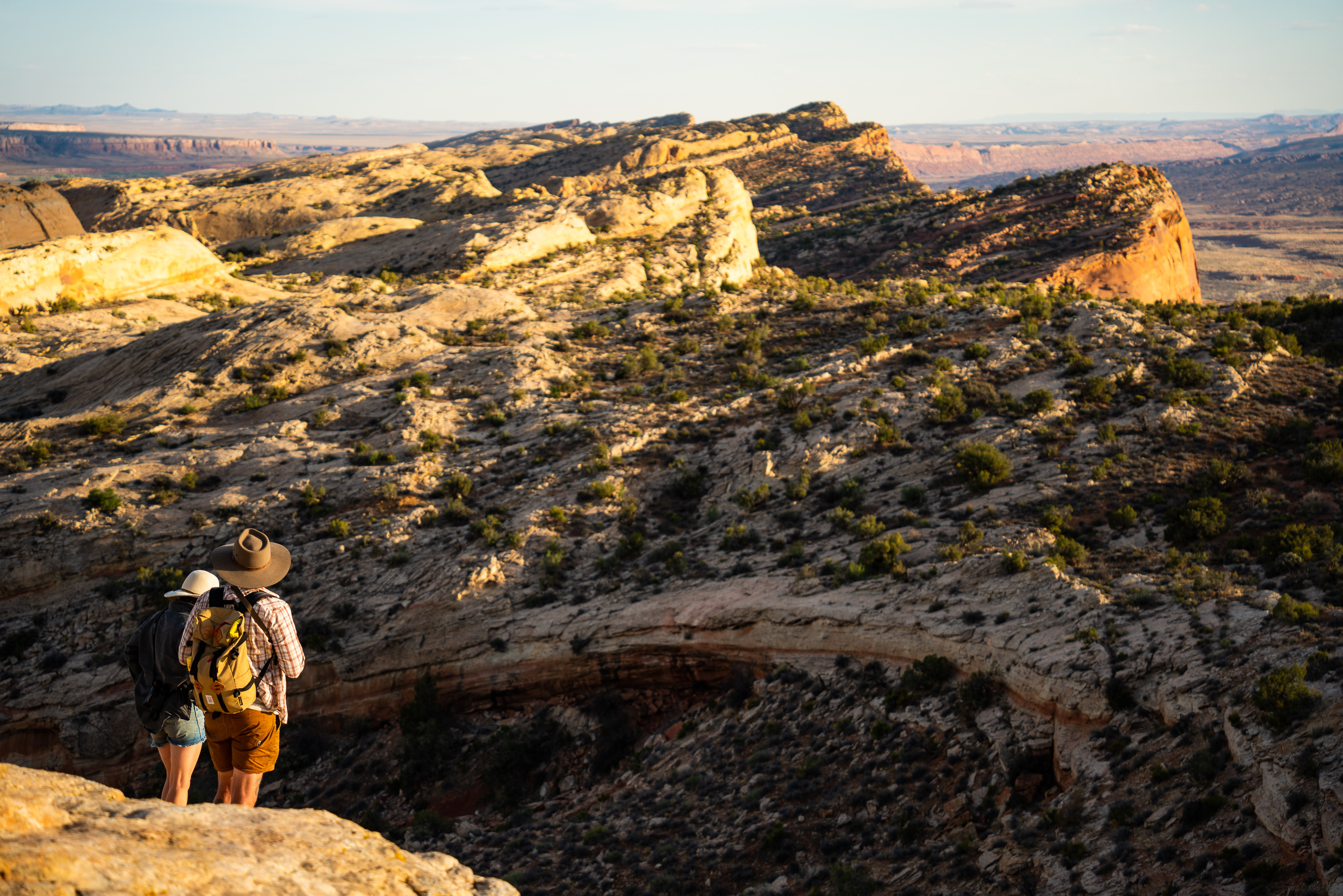Out West, the land holds stories older than any statute. It’s where the history of multiple peoples, the land, and mythology meet in sun-drenched valleys and snow-clad mountainsides. It’s also in modern times that a quiet but unrelenting war is being waged over who controls the future of the public estate. Right now, in the final days of June, that fight is reaching a boiling point. Kyle Klain walks us through Mike Lee and his quiet war on Public Lands…

President Trump has made it clear that he wants the so-called “Big Beautiful Bill” (BBB), a sweeping legislative package meant to tie together infrastructure, energy, and conservation, signed into law by the Fourth of July. That political deadline has created an opening for mischief, and Senator Mike Lee of Utah is doing what he has always done. He’s using the moment to gut federal land authority and hand the keys to the highest bidder.
While his recent effort to include land disposal language in the BBB was struck down by the Senate parliamentarian, it’s not over. The language has already been refiled in narrower form. And the intent is unchanged: use a national bill with narrow support to quietly accelerate the transfer, and eventual privatization, of federal lands across the West.
This isn’t just about Mike Lee. It’s not even just about Utah. It’s about a decades-long effort, rooted in grievance and often dressed in constitutional language, to dissolve the idea of public lands altogether. And if we don’t speak out now, the costs will echo through the sandstone canyons and river bottoms for generations.

The Lawsuit: Utah’s Long Game
Back in 2012, riding a wave of anti-federal sentiment and a resurging land transfer movement, the Utah Legislature passed the “Transfer of Public Lands Act.” It demanded that the federal government hand over roughly 31 million acres of public land, nearly two-thirds of all land within Utah’s borders, to state control. This wasn’t a request. It was framed as a legal obligation. Utah gave Washington a deadline: comply, or we’ll sue.
And eventually, they did.
The law rested on a shaky legal foundation and a selective reading of history. Lawmakers argued that when Utah entered the Union in 1896, the federal government promised, explicitly or implicitly, to dispose of its land holdings. They pointed to earlier state admissions east of the Rockies, where federal lands had indeed been sold off and transferred relatively quickly. Utah’s land, they argued, was being unfairly hoarded.

This grievance ignored a few key facts.
First, Utah’s enabling act, the document governing its admission as a state, contains language explicitly reaffirming federal land ownership. It also granted Utah millions of acres of school trust lands to be managed by the state for revenue-generating purposes. This was not a slight. It was a standard practice designed to balance state sovereignty with federal stewardship that nearly every western state would adhere to.
Second, the argument ignored the 1976 passage of the Federal Land Policy and Management Act (FLPMA), which formally ended the policy of routine disposal. Congress made a clear choice: the era of selling off vast public land holdings was over. Instead, lands would be retained and managed under a multiple-use doctrine: for recreation, grazing, conservation, and resource development. Accessible to all Americans, what a concept!


Utah’s lawsuit, which finally arrived years later, attempted to resurrect an outdated and discredited legal claim, suggesting that FLPMA somehow violated an original promise. It framed the federal government’s continued ownership of land as a betrayal. But the courts didn’t buy it.
Federal district courts dismissed the arguments on both procedural and constitutional grounds. The Tenth Circuit refused to overturn those decisions. And in January 2025, the U.S. Supreme Court denied Utah’s petition for review, effectively shutting the door on the case. In doing so, the nation’s highest court reaffirmed what legal scholars and land managers had long maintained: the federal government has both the right and the responsibility to retain and manage public lands under FLPMA.

There is no legal mandate to sell them off. No buried promise of divestiture. No unfinished business with Utah.
In reality, the Transfer of Public Lands Act was never about sound law. It was about political theater. About appealing to a certain segment of the electorate that sees the federal government as an occupier rather than a steward. And about laying the groundwork for exactly what Senator Mike Lee is attempting now: an end run around public process in favor of a quiet, strategic transfer of power over the land itself.

The Pivot: From the Courtroom to the Mike Lee Senate
Senator Mike Lee, a seasoned litigator in his own right, saw what the courts wouldn’t do and turned to Congress to do it instead. His latest maneuver was tucked into the Big Beautiful Bill without a floor debate or hearing in a subcommittee. It proposed identifying and selling off large tracts of Bureau of Land Management (BLM) lands across 11 Western states, using vague criteria like “proximity to population centers” to define what lands were on the chopping block.
The proposal was audacious in its reach and opaque in its language. It said nothing about who could purchase the land, how fair market value would be assessed, what oversight agencies would enforce it, or what protections, if any, would remain for access, habitat, or local communities.


After public backlash from all of YOU and internal Senate concerns, the parliamentarian ruled that the provision violated Senate rules and had to be removed. But that wasn’t the end. Lee quickly returned with a revised version, narrowed slightly to exclude U.S. Forest Service lands and dressed in more careful language, but still rooted in the same goal: turn public lands into assets to be sold.
And he’s moving fast because the bill may be signed within days.

Manufacturing Grievances: Utah, Statehood, and the Mike Lee Myth of the Stolen West
What animates all of this is a powerful sense of grievance and victimhood, long nurtured in parts of the rural West. In Utah, especially, there’s a deeply ingrained narrative that the state was cheated at birth. The story goes that when Utah joined the Union, it should have been given control of the land within its borders, just like other states out East (reminder that the Church of the Latter Day Saints originated in upstate New York, then later in Missouri, Illinois, and Ohio before marching to Salt Valley in then Mexico).

But this story doesn’t hold up. When Utah became a state in 1896, it was granted more than 7 million acres of trust land, lands specifically designated to generate revenue for public institutions like schools, universities, and hospitals. That’s in addition to the lands retained by the federal government under its constitutional authority and reaffirmed through case law dating back to the 19th century.
The distinction is critical. State trust lands are managed to generate profit for state beneficiaries. Federal public lands are managed under a multiple-use mandate for all Americans. The two are not interchangeable.
Still, this notion of being robbed or shortchanged continues to fester in certain political circles. And it has been used to justify a host of efforts from frivolous lawsuits to legislative sleights of hand.

The Sagebrush Rebellion Never Ended
This isn’t new. It’s just the latest chapter in a long saga that began with the Sagebrush Rebellion of the late 1970s and early 1980s. That movement emerged in response to the BLM’s efforts to enforce environmental protections and rein in abusive grazing practices. Frustrated ranchers and right-wing politicians claimed the federal government had overstepped its bounds. Their solution was blunt: get rid of federal land altogether.
That rebellion faded, but the sentiment remained. It flared again in the 1990s with the rise of the Wise Use movement and again in 2014 with the Bundy standoff in Bunkerville, Nevada. There, a rancher named Cliven Bundy and his armed supporters occupied public land and pointed rifles at federal agents while claiming that the land belonged to the state, NOT the people of the United States.

Later, Bundy’s sons led an armed takeover of the Malheur National Wildlife Refuge in Oregon, drawing national attention to this deeply rooted belief: that the federal government has no rightful place in the West, and that public lands are illegitimate.
Senator Mike Lee has never taken up arms, but his legislation speaks the same language. It weaponizes legal theory instead of rifles. It cloaks ideology in policy. And it pushes the same goal: privatize public land, weaken federal authority, and give the spoils to states, corporations, or whoever can pay.

What’s Missing in the Mike Lee Language? Everything That Matters
Beyond its philosophical underpinnings, Lee’s proposal is dangerous because of what it leaves out. The language remains silent or deeply vague on key points that should be non-negotiable in any discussion of land transfers:
- Who gets to buy the land? There’s no provision ensuring that these lands would be sold to entities with a public interest mandate. Nothing excludes foreign investors, corporate speculators, or those seeking to close off access.
- What determines fair market value? Without a clear, transparent mechanism for valuation, the door is wide open for sweetheart deals, insider advantage, or values skewed by manipulated assessments.
- What’s the time frame for sales? There is no clarity on whether lands would be sold in a single auction, over decades, or piecemeal. Each with dramatically different implications for oversight and enforcement.
- Which authorities oversee the process? Would the Bureau of Land Management still be involved? Or would authority shift to opaque commissions, state agencies, or politically appointed boards?
- What happens to access and title continuity? Without a robust framework for managing easements, access rights, and title chain, this proposal could create a legal and logistical nightmare for hunters, anglers, ranchers, and even counties that rely on access for emergency services.
These omissions aren’t accidental. They’re structural by failing to answer the basic questions of who, how, and when, the legislation invites confusion and exploitation. And that’s precisely the point. Ambiguity creates room for bad actors to operate ,and history tells us that people like Lee and the Bundys will.

The Real Stakes
This isn’t a story about a bureaucratic process. It’s a story about the future of the American West. If Senator Lee and others succeed in normalizing federal land “disposal,” what comes next? Fragmented landscapes. Closed gates. Habitat loss. Water rights up for grabs. And a patchwork of privatized fiefdoms where once there were open access and endless expanses of the stark beauty and necessity of the West.
The fight over this latest legislative push is not just about stopping one bad idea. It’s about stopping a pattern. It’s about rejecting the slow, calculated dismantling of public lands under the guise of “efficiency,” “local control,” or “economic opportunity.”
Public lands are not surplus. They are not assets to be liquidated to the highest bidder. They are our birthright, our refuge, our shared inheritance. And they deserve more than being buried in the footnotes of a legislative rider.

YOUR Call to Action
I know it’s been beaten over your head by now, but it needs to be said again—because this moment matters. The Big Beautiful Bill could be signed by July 4th, and with it, backdoor land sell-offs buried in legislative noise.
This only happens if we let it.
Democracy acts when we do. Call your legislators: 202-224-3121. Write them. Hound them. Make noise and don’t let up. They work for you and you better remind them.
And recruit others. Our voices are strongest when we rise together.
Join groups that are doing the grassroots work Backcountry Hunters & Anglers, Outdoor Alliance, and others who’ve been documenting, organizing, and galvanizing the public to stop this nonsense before it spreads.
Your voice matters. Your numbers matter. Your action matters.
Don’t you ever forget it.









